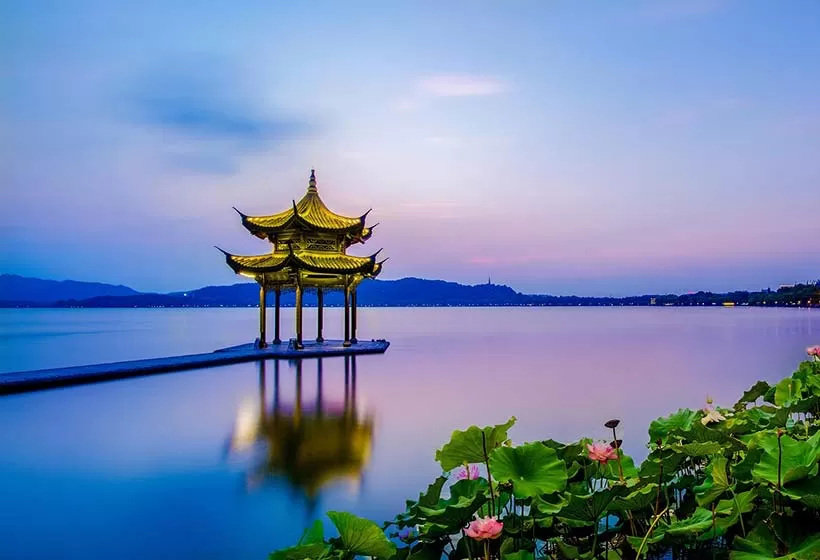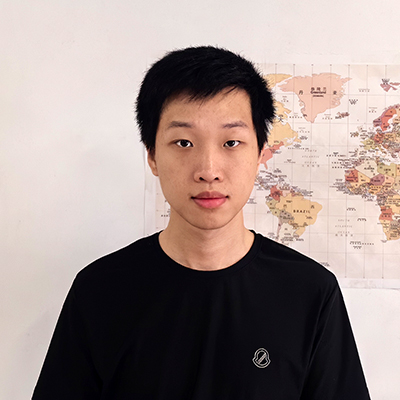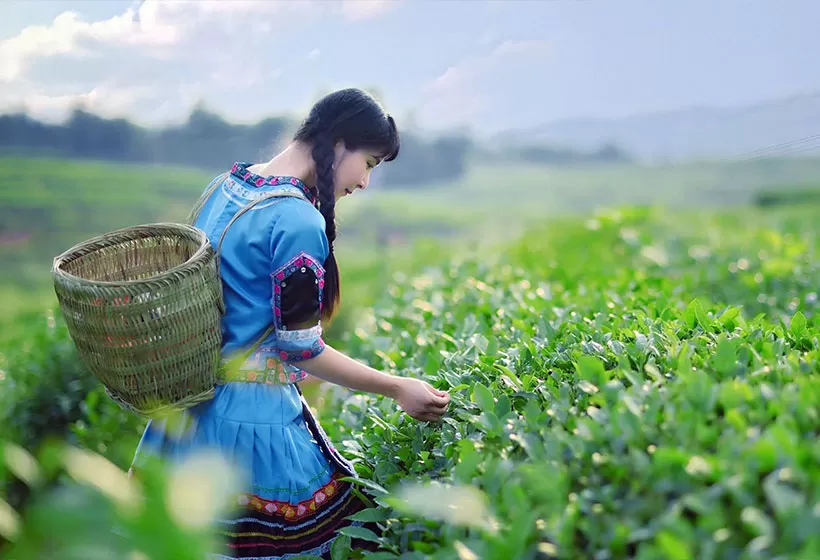Short Introduction to Hangzhou Local Culture: History, Custom, Diet, Festival, etc.
Hangzhou, formerly known as Qiantang, is the capital of Zhejiang Province, located in the northern part of the province, along the lower reaches of the Qiantang River.
Hangzhou is one of the important birthplaces of Chinese civilization and is renowned as a "famous southern prefecture". It served as the capital of the Wu-Yue Kingdom and the Southern Song Dynasty. The 13th-century Italian traveler Marco Polo praised it as "the most beautiful city in the world". Known for its picturesque landscapes, Hangzhou has long been celebrated as "Heaven on Earth", with its rich cultural heritage represented by West Lake culture, Qiantang River culture, and Grand Canal culture.
Brief History
As early as 50,000 years ago, ancient humans lived on the land of Hangzhou. The Liangzhu culture in Yuhang, dating back 5,000 years, is hailed as the "dawn of civilization".
During the Xia, Shang, and Zhou dynasties, Hangzhou was part of the Yangzhou region, where the vast lands south of the Yangtze River were collectively referred to as Yangzhou. It is said that Yu constructed “Yuhang”, which means "Yu's Vessel" in Chinese, to cross the river, which is how the area got its name "Yuhang".
After Qin unified the six states, a county was established at the foot of Lingyin Mountain, named Qiantang. At that time, the area was still a tidal beach, and West Lake had not yet formed. By the Eastern Han Dynasty, agricultural and irrigation development had begun to take shape, and sea dikes were built, separating West Lake from the sea, turning it into an inland lake.
In 326 AD during the Eastern Jin Dynasty, the Indian monk Hui Li built Lingyin Temple at the foot of Feilai Peak, making it the oldest monastic structure around West Lake.
In 589 AD During the Sui Dynasty, the name "Hangzhou" first appeared. In 610, Emperor Yang of the Sui Dynasty ordered the digging of the Jiangnan Canal, which was over 400 kilometers long. Since then, Gongchen Bridge became the starting and ending point of the Grand Canal. Hangzhou became a key transportation hub in the lower reaches of the Qiantang River, enhancing its economic and cultural development.
By the late Tang Dynasty, Hangzhou had flourished, with bustling streets and prosperous commerce. During the Five Dynasties and Ten Kingdoms period, the Wu-Yue Kingdom made Hangzhou as its capital, and under the rule of the Wu-Yue dynasty for 85 years, Hangzhou became a hub of economic prosperity and cultural richness.
In the Northern Song Dynasty, Hangzhou was the capital of the Liangzhe Region and one of the most populous prefecture in the south. The economy was thriving, and foreign trade expanded, making it one of the four major commercial ports in China. In 1089, the famous poet Su Dongpo was appointed governor of Hangzhou. He dredged West Lake again and built the Su Causeway, further beautifying the lake. By the Southern Song Dynasty, Hangzhou entered its golden age.
In the over 100 years following the Opium War, the country was weak, and the people's livelihoods deteriorated. Hangzhou's city infrastructure had decayed, and its industries faced many difficulties. Many of West Lake’s scenic spots were in ruins, with some completely abandoned.
On May 3, 1949, Hangzhou was liberated, and the city was reborn.
Region Culture
The natural beauty and cultural beauty of West Lake complement and enhance each other, mutually reinforcing and reflecting one another. As such, West Lake is essentially a cultural phenomenon, which is its core value and essence. West Lake culture is based on the aesthetic standard of achieving balance and harmony, serving as a model of traditional Chinese landscape aesthetics and the best interpretation of the ideal of "unity of heaven and man". West Lake has long been a place where scholars and literati have expressed their feelings for nature, leaving behind countless stories, legends, and timeless works of art.
The culture of the Qiantang River is one of the most brilliant regional cultures in China and represents one of the most dynamic forms of Chinese regional civilization. Since ancient times, Hangzhou, then called Qiantang, has been a thriving place with a long cultural lineage. As one of the three great capitals of the Wu region, it has gathered many talents, situated in the beautiful southeastern part of China, boasting fertile lands. The Qiantang River culture, which has lasted for a thousand years, has been shaped by the continuous forces of "water", "river", and "sea", giving rise to a culture of boldness, openness, and vitality that embraces change.
Hangzhou’s tea culture is an important component of Chinese tea culture. Since ancient times, Hangzhou has been a major tea-producing area, with Longjing tea being the most famous. The history of Hangzhou's tea culture can be traced back to the Han Dynasty, even earlier. During the Southern Song Dynasty, when Hangzhou was the capital, tea drinking became increasingly popular, with tea houses lining the streets and alleys. During this time, both Chinese tea culture and the city of Hangzhou reached their peak.
The thousand-year-old Grand Canal bears witness to the rise and fall of history. The history of the Grand Canal is, in fact, a history of the development of canal cities. As the southern terminus of the Beijing-Hangzhou Grand Canal, Hangzhou has had the canal running through the city for centuries, and its historical and cultural significance is immense. The Grand Canal and Hangzhou have developed in tandem, with the people of Hangzhou harnessing the canal's resources to create favorable conditions and transform nature.
During the Southern Song Dynasty, Hangzhou was home to many patriotic officials who were devoted to the country. A large number of distinguished ministers pledged their loyalty to the state, shaping a unique version of the city. Today, whether in terms of its urban landscape or its structure, the spirit and genes of Hangzhou are deeply marked by the legacy of the Southern Song Dynasty. This has contributed to the city’s distinct Song-style culture, leaving the world with an enduring spiritual legacy.
Special Festival
The Tide-Watching Festival is popular in the Hangzhou and Jiaxing regions, with origins dating back to the Southern Song Dynasty. Every year on the 18th day of the 8th month of the lunar calendar, the tide of the Qiantang River is at its peak. When the tide rises, the waves surge and crash with such force that it is a truly magnificent spectacle. People from Hangzhou begin watching the tide from the 11th, and from the 16th to the 18th, the entire city comes out to witness the event. The area from Miaozitou to the Liuhe Pagoda along the river is filled with rented viewing spots for the tide. Since the early Qing Dynasty, due to changes in the river's course, tide-watching has shifted to Haining in Jiaxing.
The West Lake Longjing Tea Opening Festival is usually held in late March, coinciding with the peak of the Longjing tea harvest. A highlight of the festival is the tea-frying competition, where master tea fryers showcase their exquisite skills in tea preparation. As they work their magic, the fragrant aroma of freshly fried tea fills the air throughout Longwu.
The Flower Festival, also known as "Flower God Festival", is celebrated from April 3rd to mid-May, commemorating the birthday of the flowers. It is one of China's traditional festivals, once as important as the Lantern Festival and the Mid-Autumn Festival. From the Tang Dynasty to the present, it has experienced a cycle of rise, prosperity, decline, and eventual revival in modern times.
Diet Style
Hangzhou cuisine, also known as Hangbang cuisine, refers to the dishes that originated or flourished in Hangzhou, an important component of Zhejiang's culinary culture and one of the major branches of Zhejiang cuisine. It, together with Ningbo, Wenzhou, and Shaoxing cuisines, forms the traditional Zhejiang culinary tradition.
Hangzhou cuisine can be divided into two schools: the "Lake" style and the "City" style. The former focuses on fish, shrimp, and poultry, excelling in techniques like stir-frying, clear stewing, and lightly braising. The flavor emphasizes freshness, crispness, tenderness, and a light taste, aiming to preserve the original flavor of the ingredients. The latter style predominantly uses livestock meat and employs methods like steaming, braising, starch thickening, and quick boiling, focusing on light oil, light sauces, and a mild, fresh taste with a balance of savory and slightly sweet flavors.
The taste of Hangzhou cuisine is mainly savory with a hint of sweetness, but it is not as sweet as Suzhou cuisine or as strong as Shanghai cuisine, making it widely accepted. "Lightness" is a symbolic characteristic of Hangzhou cuisine, reflecting the trend toward simpler, lighter dishes. Furthermore, Hangzhou cuisine is light and balanced, with fewer over-prominent flavors. This feature allows it easily to absorb the essence of both northern and southern Chinese culinary traditions, making Hangzhou cuisine versatile and beloved by diners from across the country.
Cultural Heritage
Hangzhou, the capital of both the Five Dynasties Wu-Yue Kingdom and the Southern Song Dynasty, is home to three UNESCO World Heritage sites: West Lake, the Grand Canal (Hangzhou section), and the Liangzhu Ancient City Ruins. The city boasts a rich historical heritage and cultural legacy, renowned for its "beautiful mountain and water scenery" and "prosperous urban life", making it one of China's most famous ancient capitals.
West Lake is the soul of Hangzhou, steeped in deep cultural significance and suffused with the charm of the Jiangnan region and generations of craftsmanship. The ever-flowing Grand Canal is the "lifeblood" of the city, a miniature of the Jiangnan water towns. The Liangzhu Ancient City Ruins, a beautiful place in water, serves as a window to the world, offering a comprehensive, authentic, and multidimensional glimpse into ancient China.
Customize Your Unique Hangzhou Tour

If you are interested in the Hangzhou itineraries mentioned above, please contact us, and we will be happy to customize it and provide a quote tailored to your preferences.
Alternatively, if you would like to customize your Hangzhou Tour, please visit our Hangzhou Tour Customized Center. We assure you that you will receive a reply within 24 working hours.
Informative Articles for Your Hangzhou Trip
 the West Lake
the West Lake- Travel Guide: attractions, weather, hotels, food, etc.
- Weather: the best time and seasons to visit Hangzhou
- Top attractions: sightseeings to watch in Hangzhou
- Local culture: brief history, folk culture, festivals, etc.
- Top destinations: best places to visit in Hangzhou
- Travel itineraries: itineraries for your reference
- Abundant activities: Hangzhou cultural immersions
- Unique perspective: top interesting things to do
- Local food: what to eat while traveling in Hangzhou
- Luxury hotels: accommodation to stay in Hangzhou
- Hangzhou Tours: customized tours for your reference
GREAT FAMILY CHINA TOUR
JULY 2024 We wanted to thank Grace at China Culture tour for organizing a great tour of China. We enjoyed our Beijing - Xian-Chengdu -Guilin -Yangshuo - Shanghai trip. Our local guides Bruce in Beijing, Susan in Xian, Jane in Chengdu, Mike in Guilin and Mary in Shanghai took care of us…read more details »
Teng Han L from SINGAPORE
Ready to Create a Unique Dream Travel?


